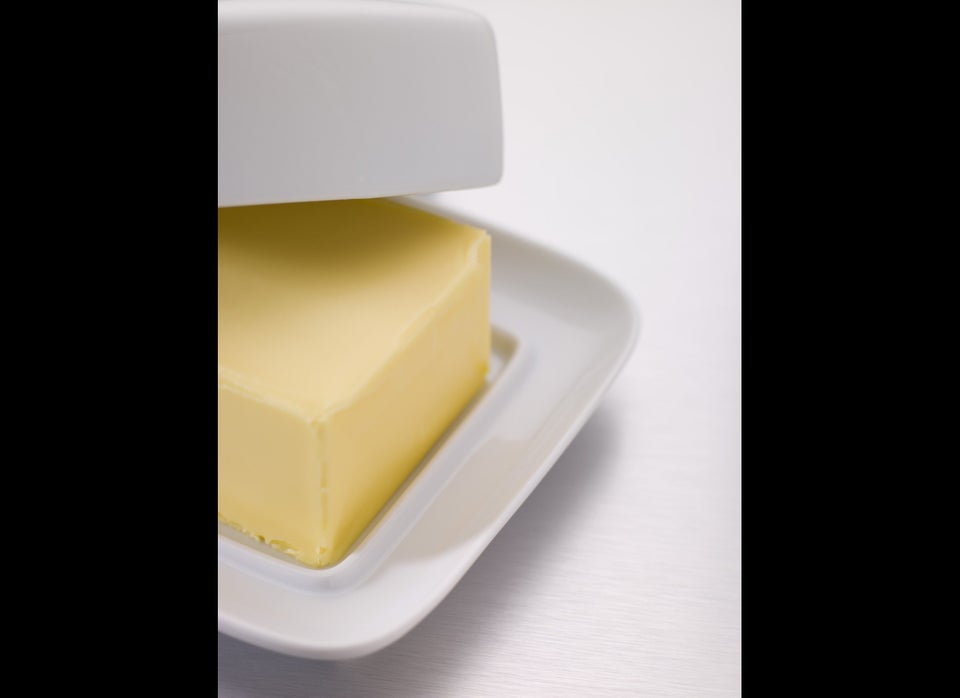There's a reason you're confused in the butter aisle. Years ago, butter was a no-no. Vegetable-oil-based margarines surged in popularity as doctors began to understand the dangers of saturated fat.
But the butter-versus-margarine debate is a slippery subject. Some margarines have unhealthy trans fats, while others have confusing health claims. Meanwhile, some say butter is an "all-natural" choice.
Well, we've got the bottom line on butter and its alternatives. Here are some of the best and worst products for your heart.
More from Health.com:
25 Surprisingly Salty Processed Foods
9 Tips From Celebrity Chefs for Heart-Healthy Cooking
25 Diet-Busting Foods You Should Never Eat
What Experts Say
The American Heart Association suggests buying soft, trans-fat-free spreads instead of regular butter or stick margarine.
Choose a blend with the least amount of saturated fat and zero trans fats. Check the ingredients: If it says partially hydrogenated oils, it still has some trans fat (less than 0.5 gram per serving), even if the label says trans fat free. These can add up if you have more than one serving.
If You Like Butter Better ...
Regular butter is made with one ingredient: cow's milk or cream, churned or shaken until it reaches a semisolid state. By definition, it contains at least 80% milk fat by weight, and it takes about 11 quarts of milk to make 1 pound of butter.
Traditionally, butter comes in salted and unsalted varieties, and it can be found in solid stick form or whipped and packaged in plastic tubs. You may also find cultured butter, a rich butter made from cultured cream popular in Europe, at your grocery store or specialty foods store.
What Is Margarine?
Developed in the 1800s in France when butter was scarce and expensive, margarine has had its ups and downs -- including several U.S. bans and taxes driven by the dairy industry.
It's been called a healthier, plant-based alternative to butter, but it also faced a backlash for being artificial and having trans fats, which help keep oil-based ingredients solid at room temperature.
Margarine is any vegetable-oil-based, butter-flavored spread that contains 80 percent oil; anything with a lower oil and fat content is called a "soft margarine spread."
Healthier Options
Your healthiest option may be to skip both the butter and the margarine.
Baker recommends using monounsaturated fat instead: olive oil for dipping bread or vegetable oil for cooking. "If you love the taste of butter and you want to sauté some mushrooms in it, I'm not going to say you can't do it, but maybe try using a little less butter and a little more oil."
Use avocado and nut butters in place of butter on sandwiches, she says. "That way you're getting fat intake but it's healthy fat intake." (Calories from any source of fat add up quickly, though, so be conscious of your portion sizes as well.)
Don't Overdo It
Whatever product you select, limit your consumption overall.
When baking, use a hard stick of trans-fat-free margarine in place of butter.
Regardless of what you use, portion size is key. "If you use a whole stick of butter when making a tray of brownies, it's not a big deal," says Baker. "As long as you eat only one or two brownies."


